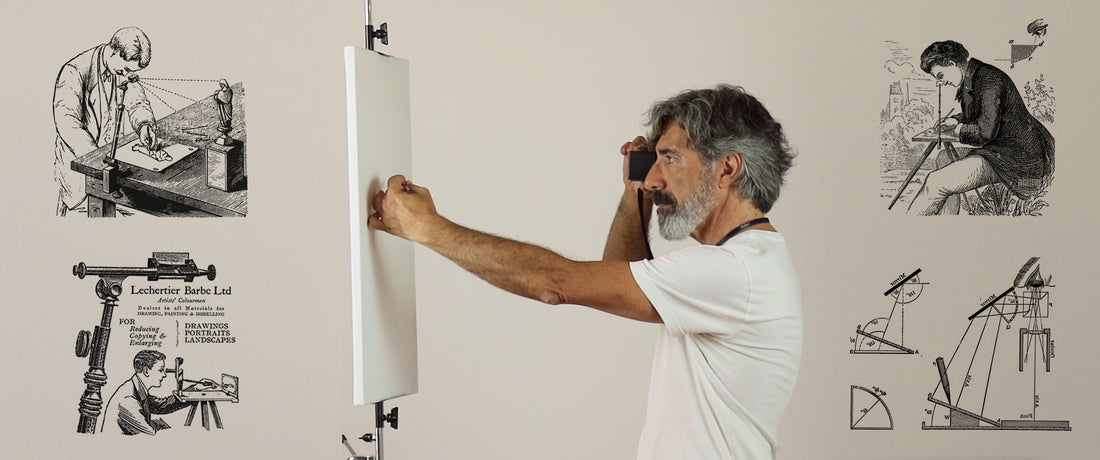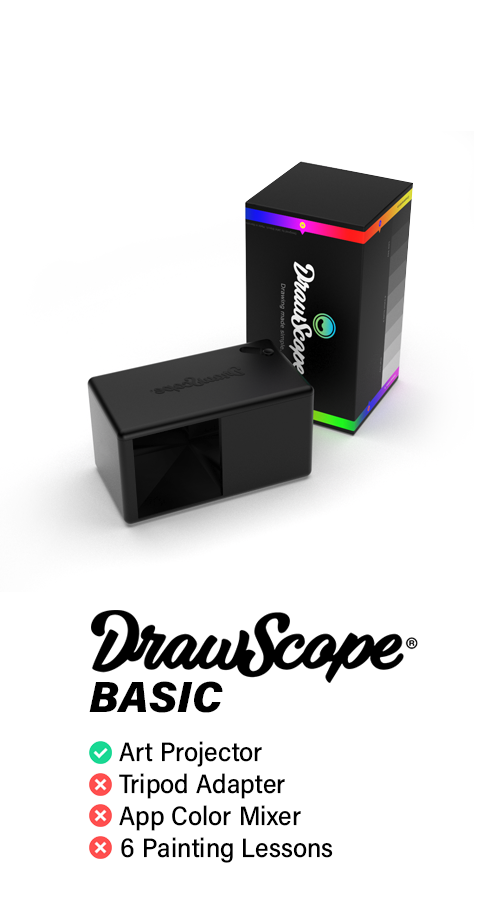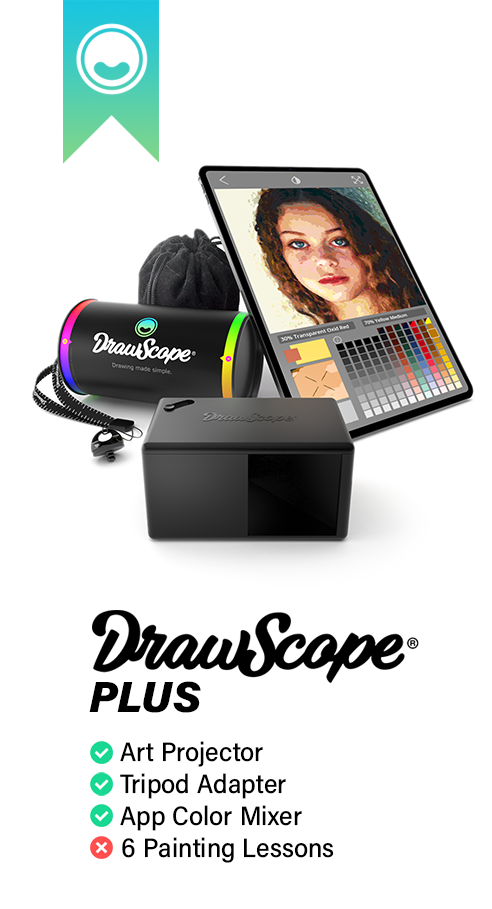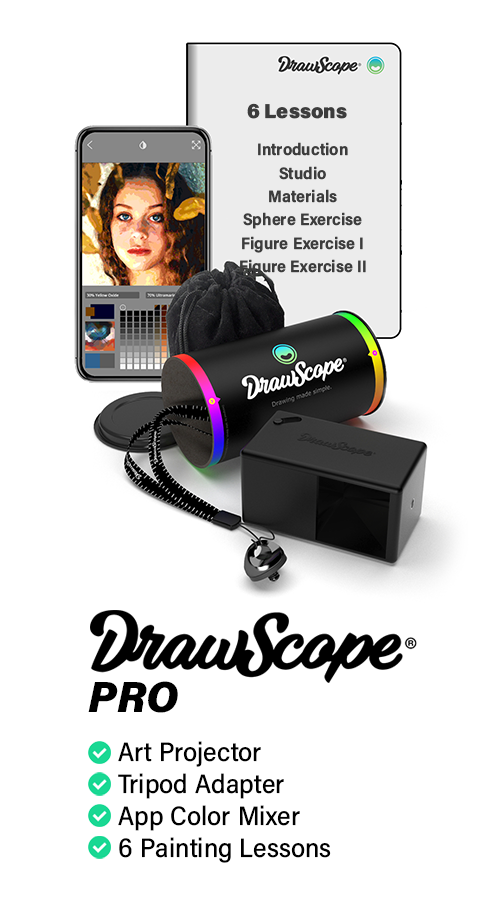The camera lucida, an optical instrument invented in the 19th century, has long been a valuable tool for artists and draftsmen, allowing them to project a view of an object or scene onto a surface, where it can be traced with precision. This classic technology, though revolutionary in its time, has inherent limitations in terms of portability, ease of use, and versatility in different lighting conditions. However, innovation does not stand still, and the emergence of the improved version of DrawScope marks a new chapter in the evolution of drawing assistance tools.

.
Historical Context
The camera lucida was invented in 1807 by William Hyde Wollaston, providing an alternative to the more complex and less portable camera obscura. The camera lucida was widely used by artists and scientists to precisely copy images from the natural world. However, its use required a certain skill and practice, in addition to adequate lighting conditions, which limited its applicability.

The New Improved Version: DrawScope
In contrast, DrawScope represents a modern evolution of the camera lucida, addressing many of its predecessor's limitations. It is compact, allowing users to carry it and use it anywhere, freeing the artist from the limitations of a fixed studio. The flexibility of not requiring attachment, while offering the option to adapt to a conventional tripod, provides improved stability as needed, which is a significant advantage over the traditional camera lucida that often required a more complex setup.

One of the most notable improvements of DrawScope is its ability to perform well under any lighting condition, even at night. This solves one of the biggest problems of the classic camera lucida, which relied heavily on adequate lighting to be effective. This feature makes DrawScope an extremely versatile tool for artists working in a variety of environments and lighting situations.
Moreover, DrawScope projects the 100% original color of the object or scene, a significant improvement over the camera lucida, which could not replicate color in the projection. This ability to capture and project true colors is invaluable for artists seeking precision in their reproductions, allowing them to capture the full essence of their subject with greater fidelity.
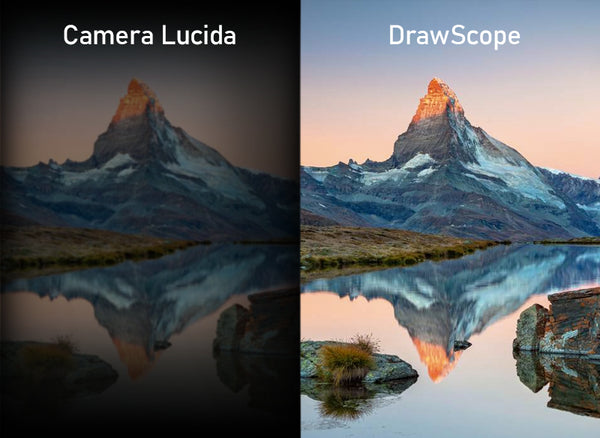
.
DrawScope
- Portability: DrawScope's compact design allows for easy transportation and use in various settings, making it ideal for artists on the go.
- Versatility in Lighting: It functions seamlessly under any lighting conditions, from bright daylight to dimly lit environments, offering unprecedented flexibility for artists.
- Color Projection: One of the standout features is its ability to project images in 100% original color, enhancing the accuracy and vibrancy of artwork.
- Stability Options: While it doesn't require a mount, the option to use it with a conventional tripod provides artists with stability when needed without compromising on convenience.
- Ease of Use: Designed to be user-friendly, it caters to both beginners and seasoned professionals, reducing the learning curve associated with traditional drawing aids.
Camera Lucida
- Limited by Lighting: Its effectiveness is greatly diminished in poor lighting conditions, restricting the time and places where it can be used effectively.
- Lack of Color Projection: Unlike DrawScope, it cannot project color, limiting artists to outlines and poor color sketches.
- Portability and Flexibility: While portable, its use can be less convenient compared to more modern devices, often requiring specific setups or conditions to function well.
- Learning Curve: The traditional Camera Lucida may require more practice and skill to use effectively, potentially deterring novice users.

DrawScope represents a significant leap in drawing assistance technology, addressing long-standing limitations of the classic camera lucida and expanding possibilities for artists and draftsmen. With its portability, ease of use in any lighting environment, and the ability to project true colors, DrawScope establishes itself as an indispensable tool for anyone interested in drawing and image reproduction. As technology continues to advance, tools like DrawScope demonstrate how innovation can enhance and expand the creative capabilities of artists, keeping alive the spirit of exploration and visual representation in art.

